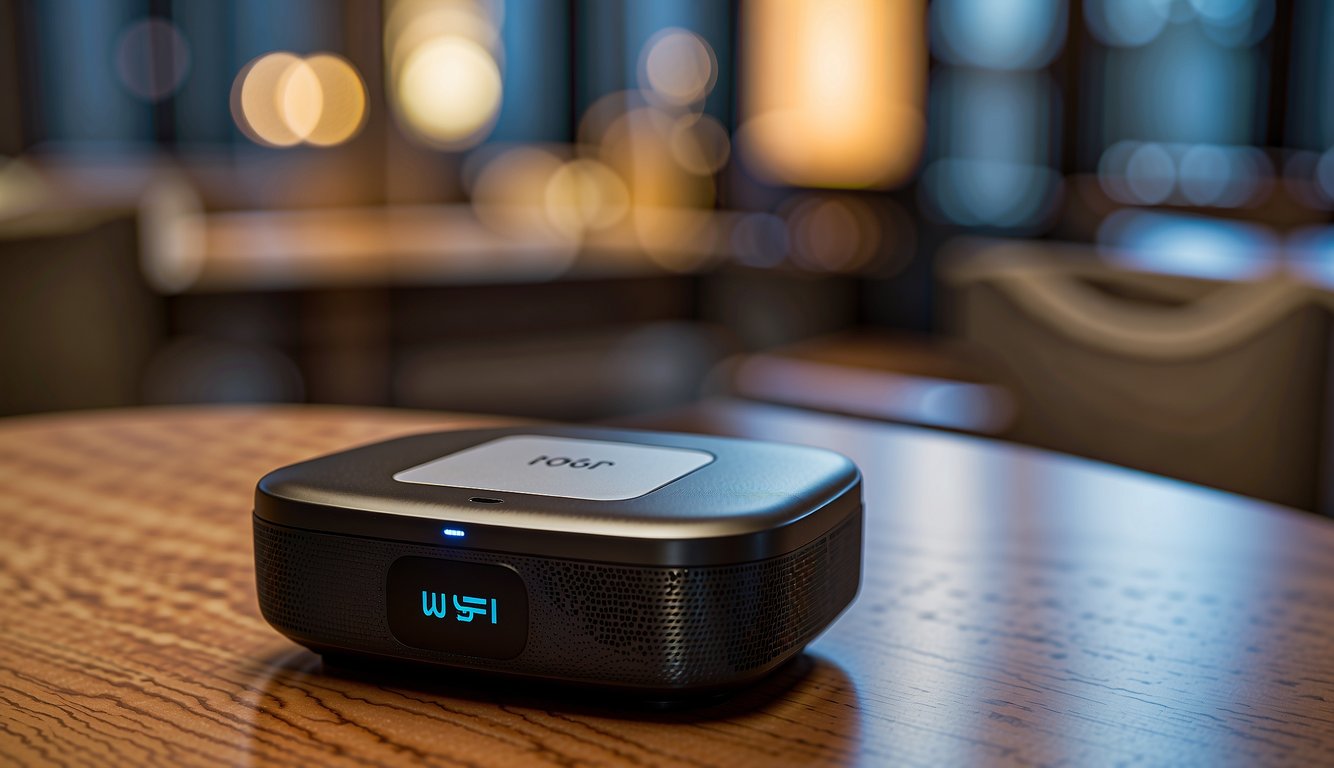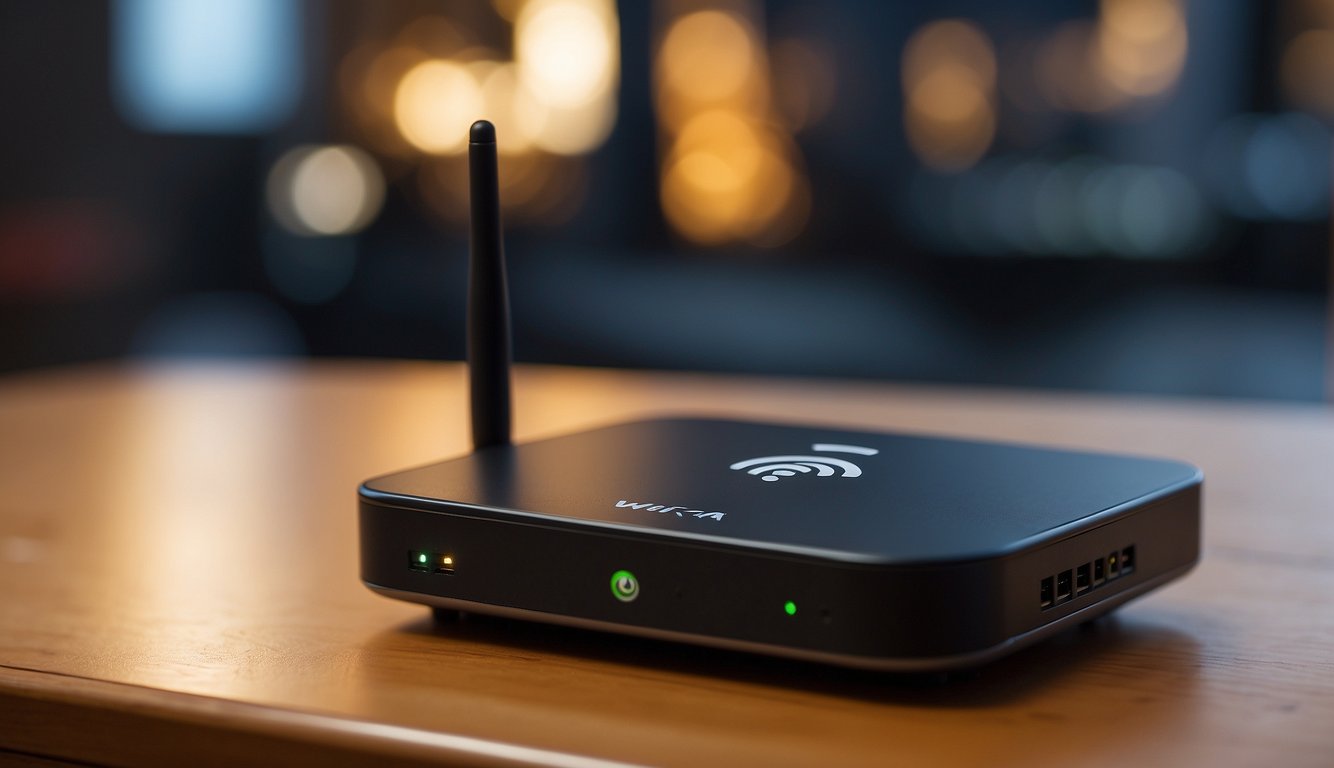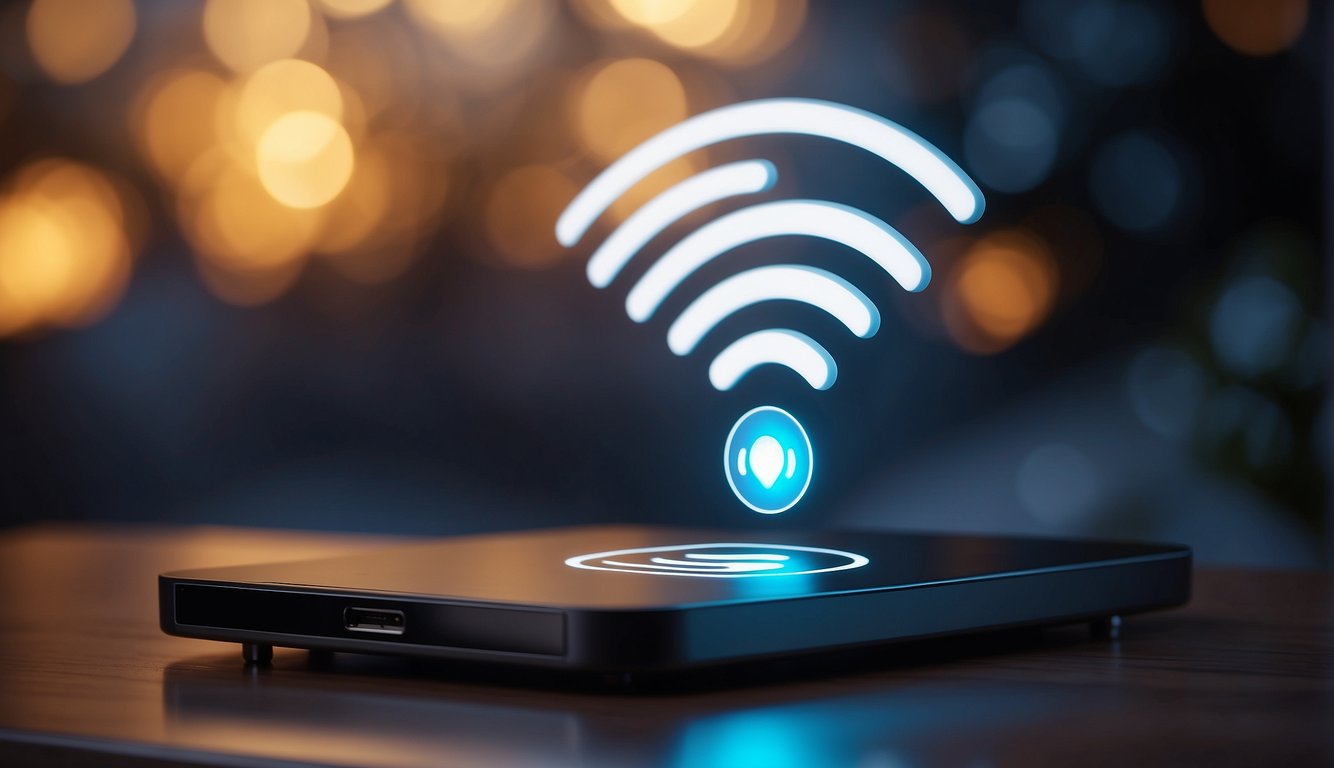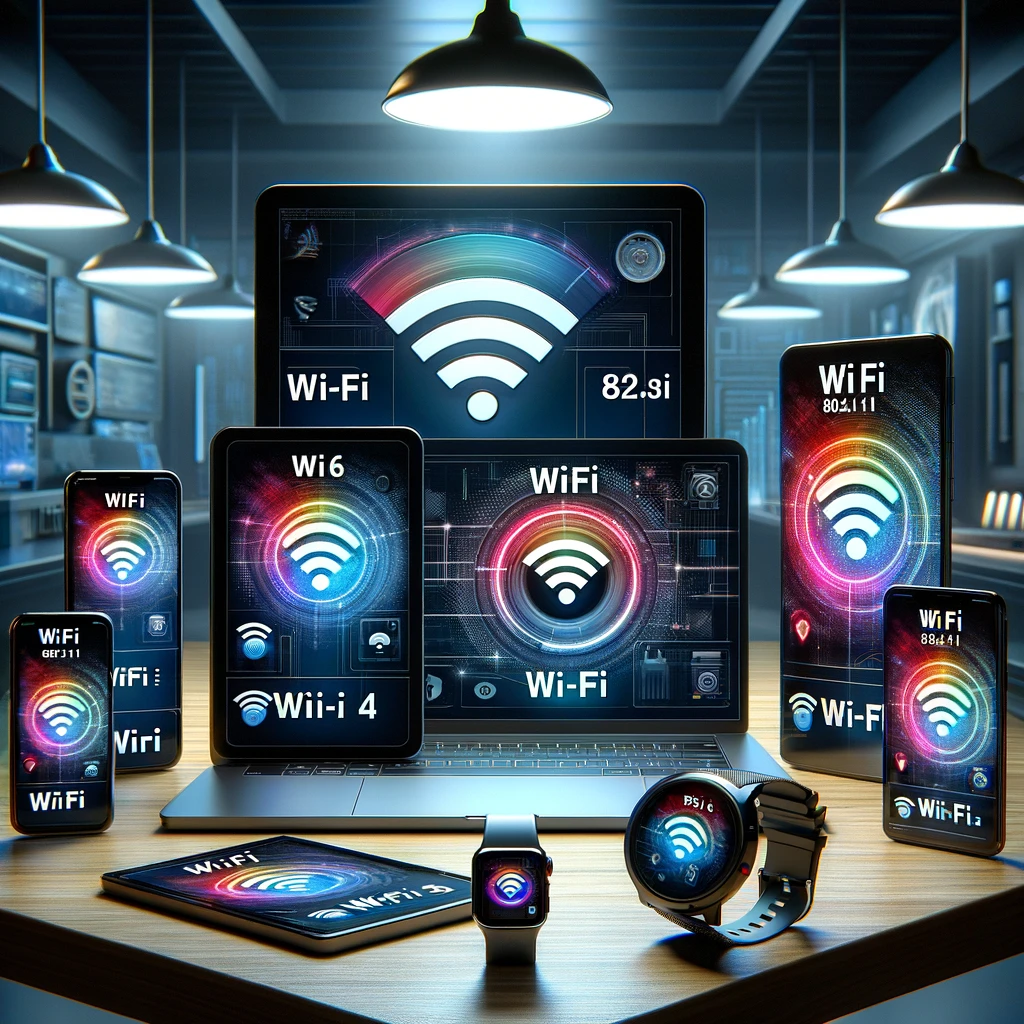When you spot a Wi-Fi logo on a device, it’s like a friendly nod from the tech world saying, “Yep, you’ll get along just fine with other wireless gadgets.”
This emblem is far more than a mere decoration. It’s actually a seal of approval from the Wi-Fi Alliance, which is essentially the club of Wi-Fi’s best buddies.
It lets you know that your device can easily mingle with others that wave the same Wi-Fi flag, keeping your connection smooth and hassle-free.

Think of the Wi-Fi logo as a promise that your device won’t hit a snag when it comes to chatting with the wide world of wireless technology.
It’s not just any promise, though – it’s a pinky-swear-level commitment that your gear can play nice with devices using the same standard.
Whether you’re at home or in a crowded café, that logo means you can confidently dive into the digital stream, surf the web, or stream your favorite tunes.

Understanding the Wi-Fi Logo
In the realm of wireless technology, the Wi-Fi logo is a mark of certification that assures you a certain level of compatibility and quality. Let’s dive into its history and what those curves and dots actually stand for.
History and Evolution
The Wi-Fi logo is tied closely to the Wi-Fi Alliance, a network of companies that drives the interoperability of Wi-Fi technology.
This logo appeared after the formation of the Wi-Fi Alliance, which began in 1999. It signifies that a device adheres to the standards set by the Institute of Electrical and Electronics Engineers (IEEE), specifically the 802.11 family of wireless network protocols.
Over time, the logo has become a trusted symbol indicating that different wireless devices can work together seamlessly.
Design Elements and Meaning
The Wi-Fi logo’s design was created by Interbrand and consists of a stylized ‘W’ of waves emanating from a point, representing a beacon or a hub of wireless communication.
This iconic design denotes that a device is certified for interoperability with other wireless devices that also sport this logo.
The logo suggests that the product is capable of joining a network with ease, assuring you of its ability to connect with a range of certified devices, be they older or newer models, thus emphasizing backward compatibility.
Technical Implications of the Wi-Fi Logo
When you see the Wi-Fi logo on a device, it’s a signal to you about several key aspects that affect how the device will perform in a wireless network environment. Here’s what you need to know about what this logo represents.
Indication of Wireless Standards
The presence of the Wi-Fi logo on your device means it adheres to certain wireless standards set by the IEEE 802.11 family.
This includes various iterations like 802.11a, 802.11b, 802.11g, 802.11n, and so on. Each of these standards has a unique set of capabilities in terms of speed, range, and frequency.
Representation of Interoperability
When your device sports this logo, it’s interoperable with other devices following the same standard.
Essentially, it means that your Wi-Fi-enabled gadget can communicate seamlessly with other equipment that’s also Wi-Fi certified, regardless of the brand.
So, you can expect your smartphone to connect with your Wi-Fi printer without a hitch if they’re both waving the Wi-Fi flag.
Security Assurance
Lastly, the Wi-Fi logo brings an assurance of security.
Adherence to Wi-Fi standards often includes a commitment to security protocols like WPA, WPA2, or even WPA3, to keep your data protected.
However, remember the presence of the logo itself doesn’t guarantee security. You still need to ensure you’re connecting to trusted networks and taking personal security measures like using strong passwords and encryption to keep your information safe.
Practical Considerations for Wireless Devices

When you’re selecting or using wireless devices, like your smartphone or router, two of the most important aspects to consider are compatibility with other devices and the performance of your network. Let’s break these down.
Compatibility with Devices
Your wireless device’s ability to communicate with other devices is essential. For smartphones and routers, compatibility often hinges on the Wi-Fi logo.
This logo means your device is confirmed to be interoperable with other devices of the same standard, which also display the same logo. So when you see this symbol, you know that your device should play nice with your other Wi-Fi-enabled gadgets.
Network Performance Indicators
Network performance is critical—nobody likes slow internet, right?
Performance is often measured by speed and signal strength.
First up is speed: the faster, the better for activities like streaming or downloading. And then there’s signal strength, crucial for maintaining a stable connection.
Stronger signals usually mean you’re closer to the router, and this can be visually confirmed through the signal bars indicator on your wireless device.
A full set of bars equals a robust connection to your wireless network, while fewer bars might have you moving closer to the source or considering a router upgrade to ensure every corner of your space has Wi-Fi.
Consumer Insights

When you’re on the lookout for wireless devices, understanding the significance of the Wi-Fi logo can greatly influence your purchasing decisions and internet experiences. It symbolizes the assurance of compatibility and quality.
Choosing the Right Wi-Fi Technology
To get the most out of your devices, ensure they are Wi-Fi CERTIFIED™. This certification means your product meets industry-wide standards for interoperability and security.
Products with Wi-Fi 6, the latest generation of Wi-Fi, offer higher data rates and performance in congested areas.
When shopping, look for this logo to enjoy advanced wireless experiences with faster internet access and greater efficiency.
Finding Public Wi-Fi Hotspots
Public Wi-Fi hotspots are convenient, but it’s important to prioritize safety and performance. Certified products will better protect your data and provide stronger connections.
When you’re away from home, you can locate hotspots through various applications, and always give the nod to networks signified by the Wi-Fi logo.
This symbol suggests that the network follows agreed-upon security protocols, giving you a safer way to connect to the internet while in public.
Future of Wi-Fi

Wi-Fi technology is continuously evolving, and you’re about to see some exciting changes. New generations of Wi-Fi bring faster speeds, more security, and a wider range, making your wireless experience better than ever.
Emerging Wi-Fi Generations
You’ve probably heard of Wi-Fi 6 as the then-latest standard, but now, Wi-Fi 7 is entering the stage, promising even greater performance.
Wi-Fi 7, officially known as IEEE 802.11be, pushes the boundaries by offering significantly higher speeds and lower latency.
- Faster Speeds: Expect multi-gigabit speeds that rival wired connections.
- Improved Efficiency: Advanced technologies like MU-MIMO and OFDMA are getting even better, optimizing data transmission.
Advancements in Wireless Communication
The future of wireless communication isn’t just about speed. It’s also about how secure and far-reaching your Wi-Fi can be. New protocols are being introduced to make your connection more secure. With enhanced encryption methods, you’ll enjoy safer online transactions and sensitive data exchanges.
More Secure:
With enhanced encryption methods, you’ll enjoy safer online transactions and sensitive data exchanges.
Longer Range:
Technological enhancements mean that your Wi-Fi signal has a longer range. This ensures a consistent connection even at further distances from the router.
- Innovative features like Beamforming focus the Wi-Fi signal toward your device, reducing dead spots.
- Emerging technologies are set to make devices more energy-efficient. So, your battery life could get a boost, too.

